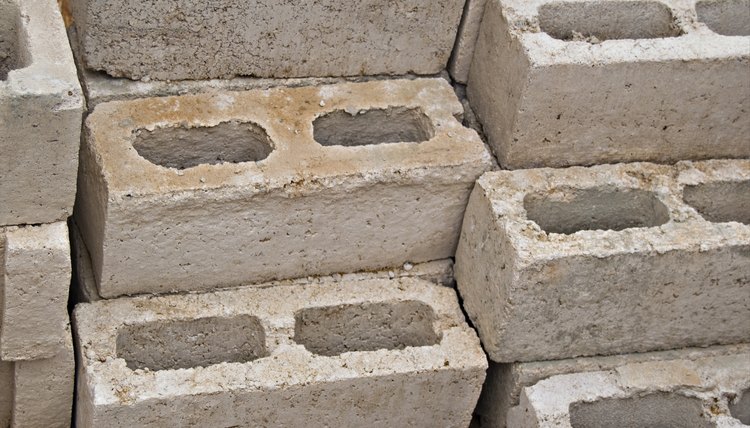What does fact checked mean?
At SportsRec, we strive to deliver objective content that is accurate and up-to-date. Our team periodically reviews articles in order to ensure content quality. The sources cited below consist of evidence from peer-reviewed journals, prominent medical organizations, academic associations, and government data.
The information contained on this site is for informational purposes only, and should not be used as a substitute for the advice of a professional health care provider. Please check with the appropriate physician regarding health questions and concerns. Although we strive to deliver accurate and up-to-date information, no guarantee to that effect is made.
Cinder Block Exercises

You don’t need dumbbells or barbells to build muscular strength or size. All you need is something to provide enough of a resistance to challenge and overload your muscles. Although the weight of a cinder block varies depending on its size, they are typically around 30 to 35 pounds, which means the construction material provides an adequate amount of resistance for most. You can get a full-body workout in with a cinder block, but wear gloves to protect your hands.
The Swing
The swing exercise develops strength in your glutes, hamstrings, quadriceps, lower back and shoulders. Stand with your feet set slightly wider than your hips and hold a single cinder block with both hands so that it rests down in between your legs. Keeping your back straight, bend forward at the waist and slightly bend your knees to swing the block back in between your legs. Extend your hips and knees to propel the block forward, swinging it up until it’s level with your eyes. Go right into the next rep by swinging the block back down between your legs.
Squat to Press
Squat to press combines a lower and upper body exercise into one. It develops your glutes, quadriceps, calves, shoulders, upper chest and triceps. Set your feet to hip-width apart and hold a single cinder block with both hands close to your chest. Push your hips back and bend your knees to lower into a squat. Continue until your thighs are parallel to the floor and then extend your hips and knees to come back up, simultaneously pressing the block overhead. As you return to a standing position, your arms should be fully extended overhead. Lower the block back to your chest and then drop into the next squat rep.
Plyo Pushup
The plyo pushup with cinder blocks develops explosiveness in the chest, shoulders and triceps. Set a pair of cinder blocks on the ground so that they’re positioned just wider than your hands would be set for a pushup. Get into a pushup position in between the two blocks. Lower toward the floor and then explosively push up so that your upper body leaves the floor. While up in the air, widen your hands so that they land atop each of the blocks. Explosively push off the blocks, landing in between them where you started.
Bent-Over Rows
Bent-over rows develop the latissimus dorsi in your back, your biceps, your glutes and lower back. Set your feet to hip-width apart and hold a single cinder block down in front of your thighs. Keep your back straight and bend over at the waist until your back is parallel to the floor. Your knees should be slightly bent and the cinder block should be hanging toward the floor. Hold this position as you pull the block up to your chest, driving your elbows up toward the ceiling. Lower the block and repeat.
References
Writer Bio
Kim Nunley has been screenwriting and working as an online health and fitness writer since 2005. She’s had multiple short screenplays produced and her feature scripts have placed at the Austin Film Festival. Prior to writing full-time, she worked as a strength coach, athletic coach and college instructor. She holds a master's degree in kinesiology from California State University, Fullerton.
